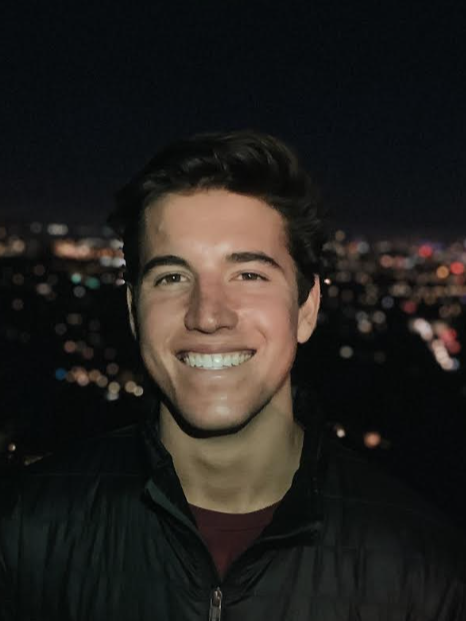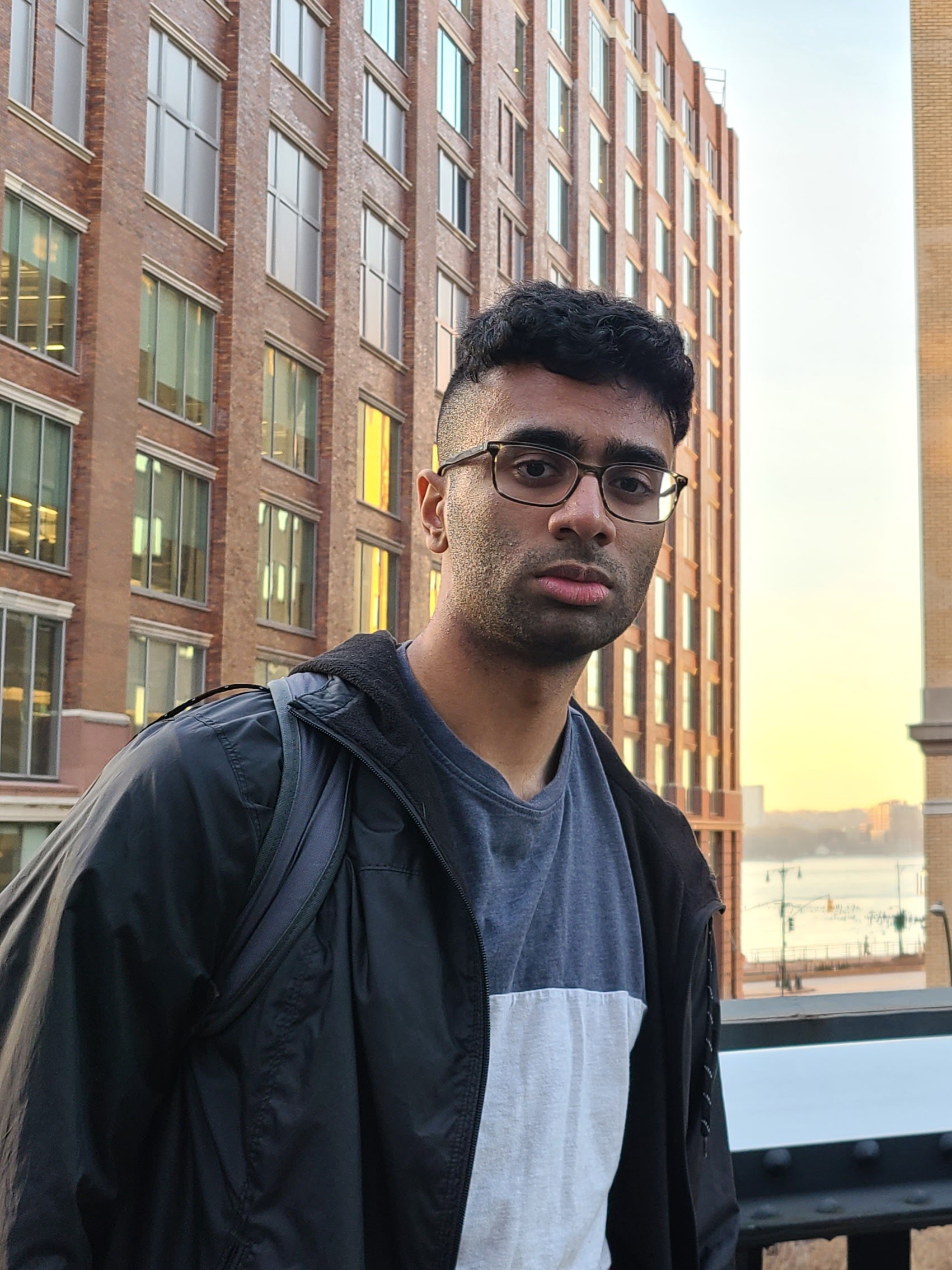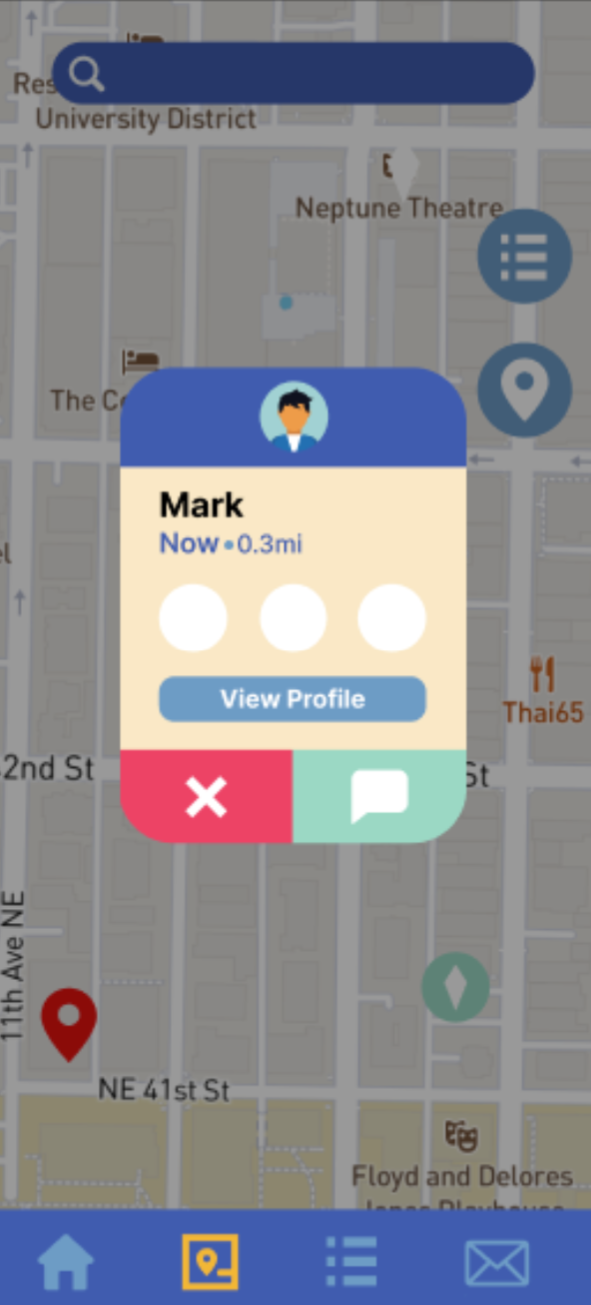PinPals
Won't you be my pin pal?
Team




Problem and Design Overview
In a world where technology is slowly replacing a lot of face-to-face interaction, people are finding it more difficult to meet new people. A study conducted by OnePoll in 2019 found that 45% of adults in the United States find it difficult to make new friends, and the average adult has not made a new friend in the past five years. So if practically half of adults are struggling to meet new people, there has to be a better way for them to know who else is feeling the same way.
Our design aims to solve this issue through the interaction of a physical pin/name tag and a mobile app. The pin is a low powered E-ink display used to simplify the process of adding new friends on the app and let others know they are part of the PinPals community. The mobile app allows people to schedule/find activities to do with new people and also aid in the process of finding other people who are looking for friends.

Design Research Process and Key Insights
The main focus of our design research was gaining a better understanding for what makes different social situations easier or more difficult to meet new people. We conducted four interviews asking each participant to talk about a time where they felt most comfortable meeting new people and another time where they felt least comfortable. Each of our four participants were young adults who have recently moved or have moved around a lot in their lives. The first interview was with Tom Honda, a Ramp Agent at Sea-Tac and has recently moved here from California. The second interview was with John Thundergun, a marketing associate for a technology company who travels around a lot and moved to Seattle about a year ago. The third interview was with Frank Reynolds, a military veteran who has recently moved to Seattle. And the final interview was with James Johnson, who recently moved to the Seattle area from India. We decided to choose these participants for our research because we figured people who have just moved would have the most recent experience meeting new people.
It's difficult when people are part of an out-group trying to join an in-group
Several of our participants mentioned that it was difficult and was very uncomfortable to meet new people when they felt as though they were in an out-group trying to become part of an in-group. Tom stated during the interview that he has a better time connecting with other people not from Seattle due to them both being part of the out-group in a way. It is difficult moving to a new place where everyone already has their group and so it is easier to just meet other people in a similar situation. John also stated that he found it much easier to meet new people at events when nobody has started to form groups yet, however as soon as people became grouped up, if he was not in a group it was much more difficult to then join a group.
The Environment can play a key role in meeting other people
The environment that social interaction also played a large roll in how easy it was for our participants to meet new people. John expressed during the interview that he was much more comfortable meeting people in quieter settings compared to loud, more stressful environments. Frank also stated that it is more difficult for him to meet new people in large crowded settings. And James mentioned that he has found that people are not as open to talking outside, especially if the weather is bad. All of these comments revolve around the idea of there being envornemnts that are better fitted for these kinds of interactions. From our research it seemed like quiter, less hectic environments with smaller groups were better for meeting new people.
It is difficult to know what people's intentions are when first meeting
Another aspect of meeting new people that surfaced during our interview process was the intentions behind the two people meeting each other. It is difficult to meet people a lot of times because it is not always clear what the other person's intentions are and interactions can go poorly if the intentions do not match. John talked about how he was in a book store once and was approached by a woman and had a nice conversation with her for a while before realizing that she was ultimately trying to recruit him for a pyramid scheme she was apart of. Frank also mentioned how he wouldn't try to talk to a female at the gym because it would be assumed he was just trying to hit on them. It is difficult to know what people's intentions are when first meeting and this can have a very negative impact on how first interactions go.
Iterative Design Process and Key Insights
First, a Paper Prototype was built to test the accomplishment of two main tasks: finding activities to do nearby and finding people nearby. The paper prototype allows for rapid iteration while encouraging feedback at the appropriate level of idea maturity required by this phase. Next, the paper prototype was given a heuristic evaluation to determine easily identifiable errors and oversights. These improvements were added to the prototype. Then, the revised paper prototype was tested using three different participants, who were asked to test the two main tasks. The two main tasks were tested by evaluating four subtasks: scan a pin and add a friend, locate and register for an event, find and message a nearby person, and edit their profile. From these evaluations, we have concluded three main errors.


Here is our storyboard and initial paper prototype
Misleading Icons
An improved design favors recognition over recall. Therefore, it is important to identify design choices that require the participant to remember what an icon is meant to represent. One of our most frequently commented symbols was the map. The participant, John Smith, said, "I know I should click on something that looks like a map, and this looks most like a map, so I assume this is it." Therefore, in the paper prototype, the map symbol had details added to indicate better what it was meant to represent.
Logistical Issues
Some oversights can be a showstopper when implemented on a final design but may be easily overlooked in the iterative design process. During one of the useability tests, the participant began sending a message to another app member when they noted there was no "send" button after they typed their message. Commonly, this button does not appear until a message is available to be sent. However, the original design did not allow a message to be delivered. The new send button was added to the design, and further testing was performed.

Design Bias
Choosing a design is a careful process, but often some factors may be overlooked. Although the design team may have reached a consensus, useability testing may identify when a choice can make people uncomfortable. Originally, the profile page indicated a metric, experience/level, that indicated to others how many interactions you have had with others. This was expected to be a good indicator of how likely someone was to be good at providing a positive experience to others who meet them as well. During one usability test, the participant said, "what is this experience thing? I feel I'd be less likely to use this because someone will notice my low level." Because social anxiety is a grave factor that prevents people from meeting strangers, it was decided to remove this information from the visible portions of the PinPals system.

Resulting Design
The main features of our resulting design will enable people to:
- Create events based on certain activities so other people who are interested can join.
- Search for other people via a map feature that shows nearby people. This is also shown in a list representation of all nearby people.
- Search for events via a map feature that shows nearby events. This is also shown in a list representation of all nearby people.
- Message other people/event groups
- Customize their profile, through changing badges, as well as other information.
- Create customizable pins to wear outside. Scanning another people's pin's QR code will let you see their profile and DM them in the app.
You can see our resulting design from the images below that will walk you through how our app works on how to complete the 2 main tasks we have.
Task 1: Find activities around you that you enjoy doing with others
Upon opening the app, you will be taken to the home page. From the home page, click the map button on the bottom navigation bar. Now, from the map screen, you can look for events on the map by scrolling around you. These event icons are represented by a green and white diamond. Alternatively, you can select the list icon right under the search bar to view all nearby events in a list format. In both list and map formats, you can click on an event that interests you and view more information about that event, such as directions, time, location, and more. If interested, you can then register!




Task 2: Find people around you that are willing to meet new people
Upon opening the app, you will be taken to the home page. From the home page, click the map button on the bottom navigation bar. Now, from the map screen, you can look for other people on the map by scrolling around you. These orange white icons represent people around you. Alternatively, you can select the list icon right under the search bar to view all nearby people in a list format. In both list and map formats, you can click on a name that interests you and view more information about that person by going into their profile. Clicking on someones icon also allows you to message them, which will allow you to form a new friend!




Other Key Features: You are able to customize your own profile, as well as communicate with other people/event groups!
This is an example of what your profile would look like. You can include details about yourself, a bio, prompts to answer, as well as badges to show what kind of activities you are into. Clicking on the messaging icon in the top right of the screen will bring you to your messages. You can filter between other people and event groups to select one and communicate!



Pin Feature: Here are a couple examples of what the customizable pin you could wear looks like!
You can change the badges, color, and shape of the pin!
This pin would be something that you could clip onto your backpack or suitcase while traveling as well as wear like a nametag at a networking event. This lets everyone know that you are part of the PinPal community so people who are also in the community know you appraochable as well as being a good conversation starter for people who are not in the community! After you meet someone, just have them scan your QR code on their app and this will add you as friends.

